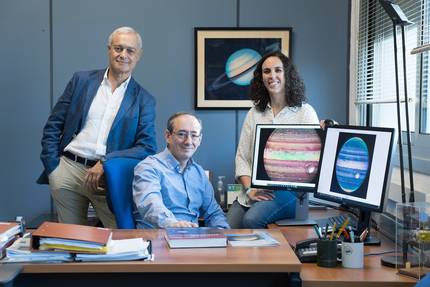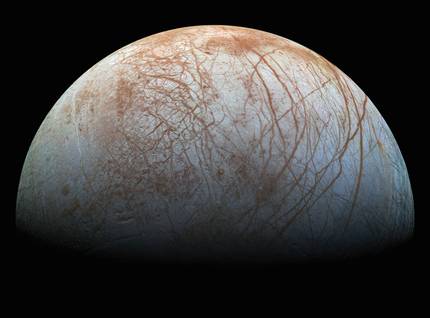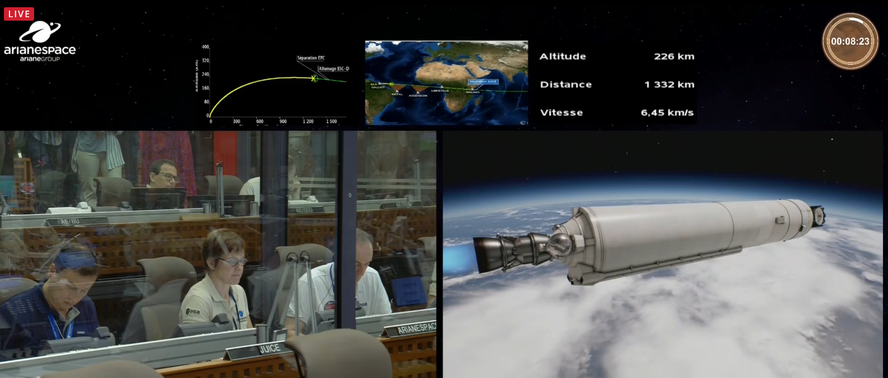Frozen moons
2023/12/01 Galarraga Aiestaran, Ana - Elhuyar Zientzia Iturria: Elhuyar aldizkaria
Moon missions always arouse people's curiosity. Evidence of this is the expectation generated by the Indian mission of Chandrayswarovski-3. However, the Earth's satellite is not the most interesting moon in the solar system, at least given that others have life-enabling characteristics. They are frozen moons and researchers from the Planetary Sciences Group of the UPV/EHU Arrate Antuñano Martín, Agustín Sánchez Lavega and Ricardo Bone Alonso attempt to discover their secrets.

Arrate Antuñano Martín investigates Saturn and Jupiter in whose orbit are frozen moons. Antuñano no doubt: “Our Moon is interesting, as it could not be otherwise, because it orbits our planet, but, on the other hand, we know that today it does not meet certain conditions of existence. On the contrary, frozen moons seem to meet the minimum conditions for life. That’s why we’re so interested.”
Two moons of Jupiter and one of Saturn stand out: Europe and Ganymedes, and Encelado, respectively. “These moons have conditions for adopting the kind of life we know on Earth: liquid water, a source of heat and, of course, certain elements such as carbon and oxygen.”
They're called frozen moons because they're covered by an ice sheet. “As we have seen so far, we believe that Europe, Ganymedes and Entzelado – and perhaps also Calisto – have oceans of liquid water under the surface layer. In addition, we believe that this water is salted, so one more reason to equate it with the conditions of the Earth,” said Antuñano.
Liquid and salt oceans
Voyager missions have already shown that Jupiter's moons didn't look like Earth's moons. In fact, in 1979, as they passed by Jupiter, astronomers had the opportunity to observe Europe. On their surface they expected to see craters produced by mountains and collisions of asteroids or comets, while it was completely soft. It was therefore inferred that, as a result of some phenomenon, the skin is renewed and therefore has no trace of shocks. “They thought there would be a liquid layer underneath that would interact with the top layer and allow skin renewal,” he explains.
Subsequently, the Galileo and Juno missions for Jupiter and Cassini at Saturn obtained significant data on moons: “For example, in Encielado the geysers were observed and Cassini was lucky enough to go through one of them. Thanks to this, and through the utensils with the probe, it was known that in those jets emitted by the moon there was salt water ice, among other elements”.
In Europe and Ganymedes it was stated that they had magnetic fields: “Jupiter’s magnetic field interacts with moons and produces distortions. For example, in Ganimedes, analyzing the characteristics of these distortions, they concluded that there should be a conductive material under the ice. In the end, mission to mission and data, we have gradually confirmed the presence of liquid and salty oceans under the ice.”
In addition to the similarities of moons, Antuñano points out the differences: “Europe’s ice sheet is 10-15 km thick, while Ganimedes’s is 150 km thick. Of course, it's not the same to be at one distance from the skin as it is to another. For its part, Ganymedes is much bigger than Europe, in fact it is the largest moon in the solar system and is greater than Mercury itself. In addition, we believe that Ganymedes does not have a single layer of water under the surface ice sheet, but has more than one layer of ice and that among them are the oceans.”
The Moon of Saturn, Encinado, also has its peculiarities. It's very small comparatively. “Until the arrival of Cassini it was not believed to be of any interest, but he observed geysers similar to those of Europe and Ganimedes, and since then we have paid a lot of attention”
The opportunity of life
Previous missions were not specifically designed to study frozen moons. However, the James Webb space telescope (JWST) already has hours of observation scheduled for them and has already started to report. For example, it has observed Europe and, based on carbon dioxide mapping and spectral characteristics, it has deduced that the origin of carbon is the underlying ocean.
Why is this significant? Antuñano responded: “Carbon dioxide is mainly observed at a given location. In fact, carbon dioxide wouldn't last long on the surface, it would decompose. And it's already known that there's material exchange in that place between the surface ice and the underlying ocean. It follows that carbon comes below. And, as on Earth, if the ocean has carbon dioxide, the possibility of a kind of life we know on Earth is reinforced.”
In Ganimedes, the JWST has detected hydrogen peroxide. Concentrated in the poles, according to Antuñano it is very interesting: “Charged particles from Jupiter collide with the icy surface of Ganymedes and channel the magnetic fields of the moon toward the poles.” This shows that, in addition to the moon itself, its interaction with planets is very significant.
In fact, JWST will also analyze planets, and in the Planetary Science Group, they have scheduled hours for Jupiter's observation under the direction of Ricardo Bone Alonso. “We can’t know what JWST is going to bring, but I’m sure we’re going to get valuable information and we’re going to know in the icy moons and on their planets what we can’t imagine now.”
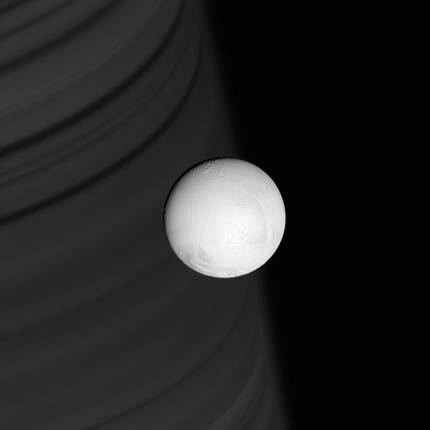
Although he is not an astrobiologist, he seduces the possibility of finding an alien life: “Discovering also the slightest trace of life, both astronomical and in its vicinity, one cannot doubt the existence of life somewhere in the universe.”
JUICE mission underway
This hypothesis has driven the JUICE mission (Jupiter Icy Moons Explorer). It was launched in April 2023 and involved Sánchez Lavega and Bone as members of the research team of an instrument, specifically in the research groups of the MAJIS and JANUS instruments, respectively.
Sánchez Lavega states that MAJIS (Moons And Jupiter Imaging Spectrometer) is one of the most complex instruments JUICE carries: “It will take images and spectrums both at two spectral levels, the visible and near-infrared and the middle infrared.”
He pointed out that the Paneteras Science Group, with both MAJIS and other instruments, aims to investigate the atmosphere of Jupiter, its dynamics, clouds and mists and its chemical composition. “However, the contribution of MAJIS to the study of Ganymedes, Europe and Callisto is expected to be decisive for understanding the oceans of these moons. Sometimes it can reach a resolution of about 100 m above the surface. It will study the chemistry of light surfaces and atmospheres and look for organic molecules of great astrobiological and water-related interest.”
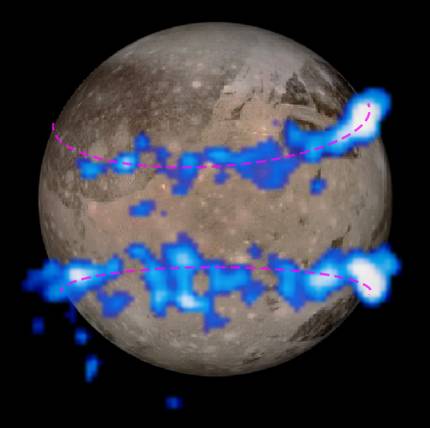
In addition, it will locate the focus on the most active areas, identifying candidates for future on-site explorations.
JANUS, for its part, is acronym for Jovis, Amorum ac Natorum Undique Scrutator, who, according to Bone, is in charge of capturing the highest resolution images of the JUICE mission.
In fact, this camera can take images from sight to near-infrared. Thanks to this, it is able to capture images of Jupiter and its moons in their natural color, as well as some phenomena that can be observed in other wavelengths, such as the volcanoes of Io or the rays of Jupiter. “Among all the instruments JUICE has, JANUS is one of the most versatile,” says Bone.
Bone will coordinate the design and analysis of JANUS observations in the atmosphere of Jupiter. You will get resolution images of 10 km and resolution maps of 30-40 km. To understand the resolution, we have to bear in mind that Jupiter's radio is 11 times greater than that of the Earth. “This will allow us to study the atmosphere of Jupiter and the structure of clouds, as it has not done.”
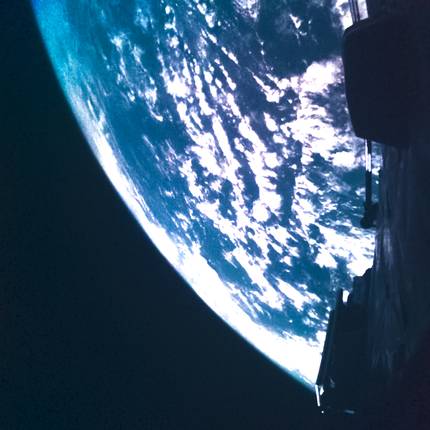
Bone adds that, as it passes through Europe and Callisto, JANUS will observe its surfaces and take resolution images a few meters from the orbit of Ganymedes. “We will be able to analyze the finest details of the geology of Jupiter’s icy moons,” he confirmed.
In addition to these instruments, it has others for the study of frozen moons and their oceans, as well as for the search and investigation of possible conditions that allow life. “Aside from the question of life, JUICE will provide valuable information on the geological evolution and genesis of moons and their interaction with Jupiter,” says Antuñano.
Looking to the future
A new mission, as Antuñano has pointed out, is planned for the end of 2030: Enceladus orbilander. It aims to orbit the Enceladus and then place a probe on its surface. “Given the interest in the oceans of these Moons, it is almost essential to design missions to go there. Because the information you can get from Earth is very limited. That’s why missions are made to explore firsthand, even if they are difficult and complex, and expensive, how not.”
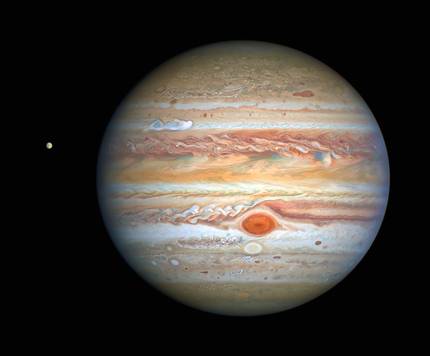
As Antuñano explained, the orbiter, besides observing the surface of Entzeladoren, will help decide where to illuminate the probe. “The idea is to drill the ice sheet and take a sample to bring it one day to Earth. It’s not easy: because the moon has very little gravity, it’s hard for a probe to be properly postponed on the skin, make a hole, take a sample… But the development of technology allows it today. We've managed to get samples of asteroids. It is not so deformed. And although many people find that the 2030 end is far away, for us it is tomorrow, because preparing these kinds of missions is at least 30 years old. Therefore, within 15 years, for us, it is immediate.”
“What if that is achieved, why not send another mission a little further?” Antuñano asks to finish. Astrophysicists' curiosity is insatiable.

Gai honi buruzko eduki gehiago
Elhuyarrek garatutako teknologia



